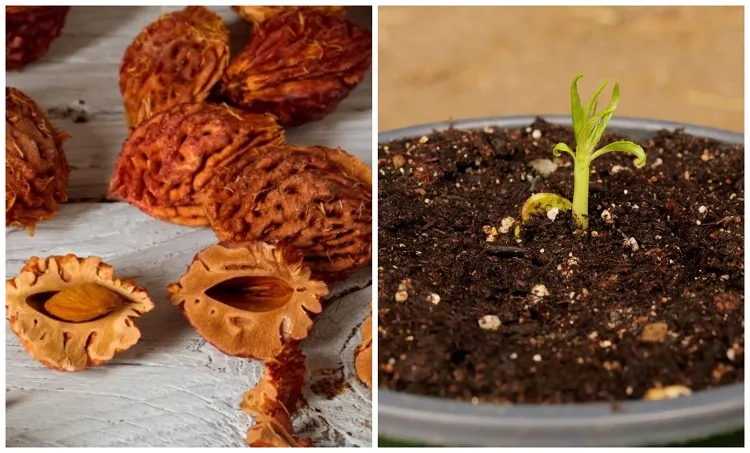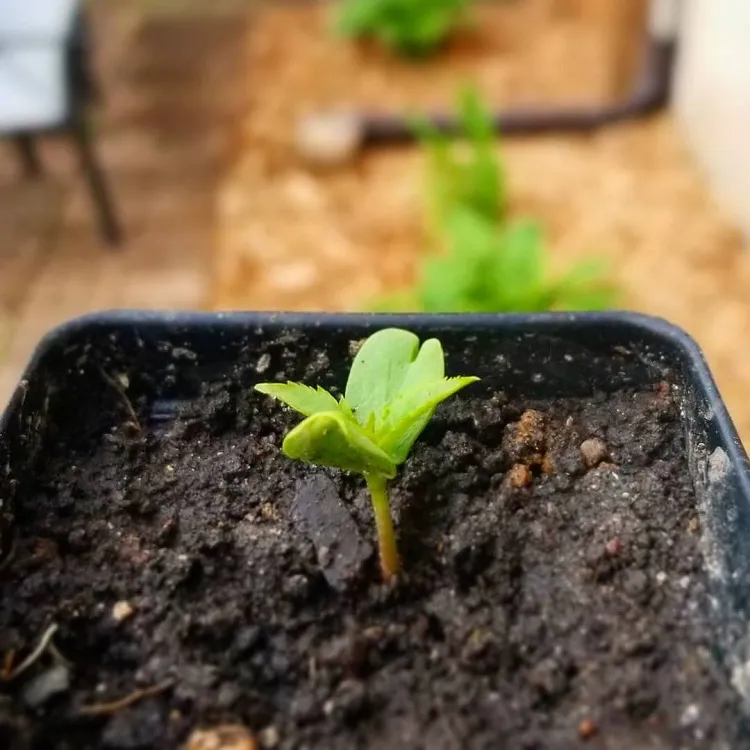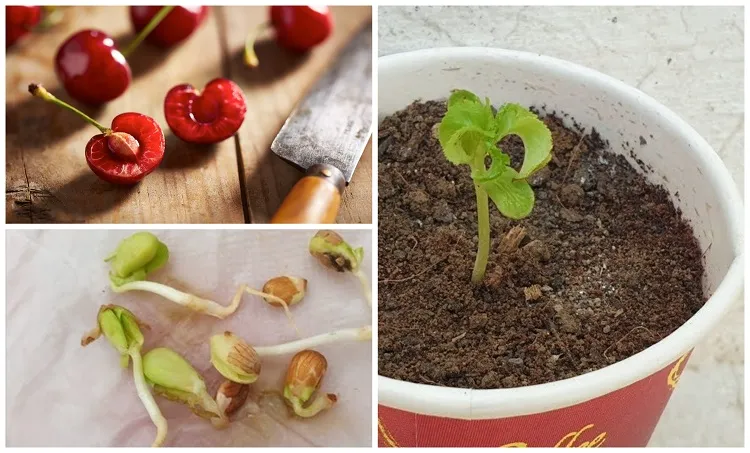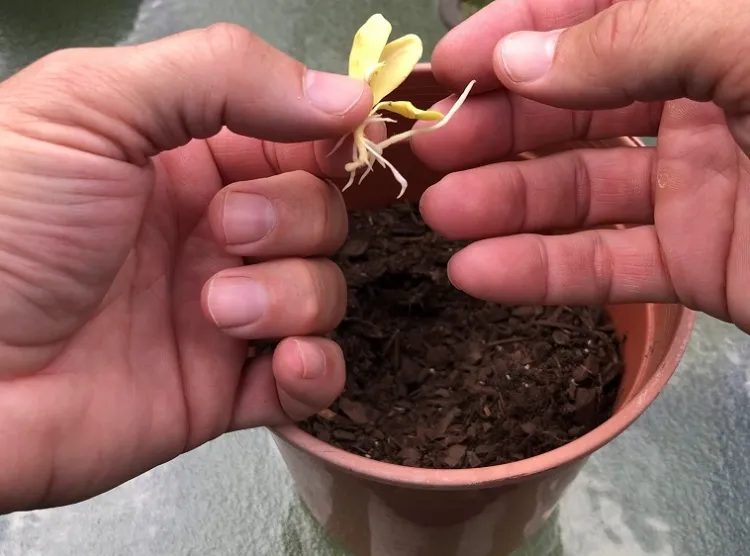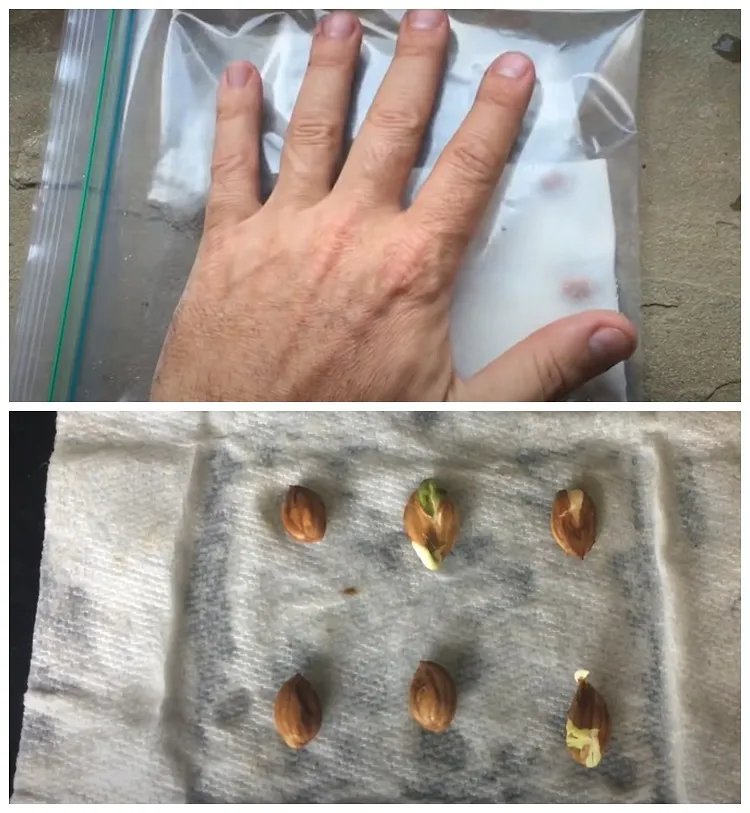Do you dream of an orchard full of delicious and colorful fruit trees? Peaches, plums, cherries, apricots, all contain pits which, in turn, contain a seed. And it’s this seed that gives birth to a new tree! That said, can all pits be germinated? How to grow a fruit tree from a pit? When is the best time to plant fruit trees? And which varieties grow fastest and easiest? Deavita team answers you!
It is quite possible to germinate fruit pits, provided you follow the right techniques. Moreover, spontaneous germination is not uncommon either. It usually occurs from a fallen fruit, especially for peaches. Dried fruits (almonds, walnuts, hazelnuts) and fresh fruits (peaches, apricots, plums, cherries, avocado, etc.) can give you so many small shrubs. Discover all the step-by-step instructions + tips and a video to get you started!
Which Fruit Pits Can We Plant?
Almost all fruit pits and seeds can be planted to produce fruit trees: apricot, peach, cherry, kiwi, apple, plum, mango, date, lychee, orange, lemon, etc. Choose heirloom varieties and avoid hybrids. Also, keep in mind that canned fruits (olives) that have undergone many different treatments cannot or are very difficult to germinate. In all cases, you need to prepare and clean your pits before planting them. Don’t forget to remove the flesh to prevent rotting. Choose fruit pits that grow quickly and easily. Which is the fastest-growing fruit tree? The peach tree is unquestionably the champion of rapid growth. A tree 30-40 cm high can produce fruit without any problem. How long to grow a cherry tree? As a general rule, cherry trees grow to a height of about 3 feet/1 m. per 1 year, and start producing fruit at about 3 years of age. Plums, on the other hand, are more demanding and a little slower than other fruit trees. Fruiting is usually 3-4 years after planting.
When to Plant Fruit Pits?
To germinate peach, cherry, plum, apple or apricot pits, place them in the ground in the fall. If you prefer the cold, moist stratification technique, place them in the fridge for 3 months and, when the warm weather returns, plant them in pots or in the ground. However, remember to protect them from extreme weather conditions. An early spring warm-up can cause your pits to sprout too early. The same applies to late frosts. In spring, place your pots in a sheltered spot, preferably against a north-facing wall. Once the summer sun returns, don’t forget to place them in a sunny spot and water them regularly. For exotic fruit pits, such as mango and avocado, the best time to plant them is in winter.
How to Plant and Grow a Fruit Tree From a Pit?
How exactly does it work to germinate a fruit tree from a pit? To be successful, germination must take place outdoors, in pots or containers. To avoid early germination due to premature warming, consider burying your containers. You can also germinate fruit pits in a basement or damp box. Beware of excess water which can lead to rotting. Remember to put sand on top of your pots so that rainwater runs off the sides. To protect them from winter frost, a layer of straw or dead leaves will do the trick. Finally, install a rodent protection grid.
Get the Right Equipment
Before purchasing the following materials, you should know that fruit trees obtained through this propagation technique may not yield as much as the mother tree. Their fruits will not be identical to the ones from which the seed was obtained. This is why, to obtain identical reproduction, it is necessary to do a graft afterwards.
- pots or containers
- soil from your garden or universal potting soil
- sand
- pits from ripe fruit, well cleaned
Note: Since the young shrubs appear a few months after planting, when spring returns, remember to affix small labels on the containers.
Germination and Stratification of Seeds
Cleaning the pit and planting it is not enough to make it germinate. Experienced gardeners recommend the cold, moist stratification technique. How does it work? Store the pits in the in the tray of your refrigerator for 2-3 months to mimic the winter conditions necessary for germination, then put them in a moist substrate and place them in a sunny, preferably sheltered corner. This method aims to make the core softer. It works with large seeds – almonds, walnuts, acorns, chestnuts, olives, peaches, plums – but also with the pits of apples, pears, apricots and cherries. Ideally, place them in a jar, airtight box or plastic bag filled with potting soil and sand, or covered with damp cotton.
How to Grow a Fruit Tree from a Pit Outdoors in 5 Steps
If you choose to plant your seeds outdoors, do so in the fall.
- Start by mixing potting soil and sand.
- Pour everything into a pot, then place the pits in it vertically and add a layer of sand on top.
- Glue a label on the container and bury it in the ground so that the seed does not germinate too early. Choose a place with little sunlight. Ideally, bury your pot close to a wall.
- Wait until spring to replant your cherry, plum or peach tree in the garden.
- Don’t forget to add ash to fruit trees to help them flourish.
Grow a Fruit Tree from a Pit in a Basement
How to germinate a fruit pit? Experienced gardeners tend to germinate their pits in a basement or other dark room. And this, of course, after storing them for 3 months in the fridge. Mix potting soil and sand in a pot, press the pits into it and place in the basement. Keep the substrate constantly moist. When the warm weather returns and the first young shoots appear, take the container out and place it in the sun in the garden.
Grow a Fruit Tree from a Pit in a Container
You can follow the same method, but this time using an airtight box. Simply put the cleaned pits in damp cotton and in a dark place at room temperature. Monitor germination, then plant them individually in pots filled with potting soil and sand. Water to keep the substrate moist and encourage seedling development.
Video Tutorial: How to Grow a Plum Tree from a Pit?
To germinate a plum pit, you have to test its resistance to cold. To do this, wrap your plum pit in a moistened tissue and place everything in a plastic bag to create an ideal environment. Put it in the refrigerator while waiting for germination. You will have to wait between 70 and 90 days for germination to take place. If all goes well, place the seedlings in a pot filled with sand and potting mix from your garden. Place the germinated plum pit seedling up, pressing it slightly into the soil, then water. Once the first leaves have appeared, let it air out in the sun, sheltered from the wind, to prevent it drying out too quickly. To make things clearer, follow the video tutorial above.
The Easiest Trees to Grow at Home
You can grow almost any fruit pit and seed. However, some are easier to germinate than others. For example:
- apple tree
- avocado
- peach tree
- pear tree
- lemon tree
If you want to germinate an olive, date or mango pit, you’ll need to be patient. To succeed and increase your chances, remember to collect around twenty fresh and untreated pits. If you’re just cleaning up the pit and planting it as is, forget it! Olive pits, for example, must first be filed down and soaked in lukewarm water for a few weeks. The same goes for dates. As for the mango, its pit must be broken to extract the seed.

